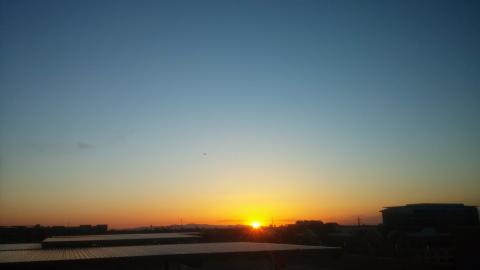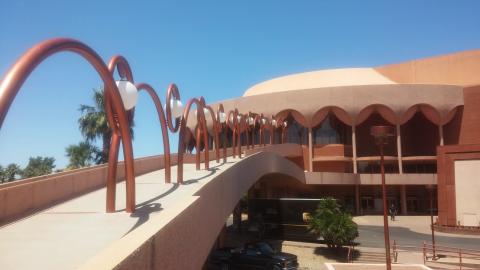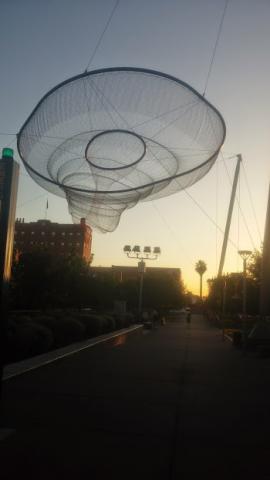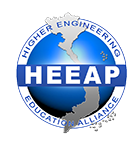
During the HEEAP faculty development trainings at ASU, in addition to the core value that the program brings to the faculty, there are many opportunities to experience other aspects that make these trainings more exciting. Here are the top 10 tips from my personal experience while visiting the ASU Tempe Campus in May 2015.
1. Visa: The very first and most important step to attend the training at ASU is obtaining a United States travel visa. A basic advice is to start the process as soon as possible and to be proactive. Since there are many people being interviewed for a U.S. visa on a daily basis at the U.S. Consulate, you should start the process as soon as your receive the appropriate documents from ASU. To do this quickly, arm yourself with information by reading the guidelines from the U.S. Consulate and embassy websites or contact the HEEAP coordinator. If you want to register for a group interview, you can; but keep in mind that deciding on a date when all members can be available could take time. If you cannot agree with your group on a date in a timely fashion, just interview on your own.
2. Luggage: After obtaining a visa, the program coordinator will purchase your airfare tickets and you will be ready to start packing your luggage. Beside carry-on baggage, each person can bring up to two pieces of luggage weighing 23 kilograms each. Usually, faculty will buy many things in the U.S. to bring back to Vietnam; therefore, it is a good idea to just bring the essentials on your US-bound trip so that you have more space for the return flight.
3. Jet lag: This cannot be avoided because the two time zones are reversed. To lessen the negative effects of the time difference, you should try to sleep on the airplane, and while in Arizona, try to wake up at the same time as you normally do, and try to go to bed no earlier than 10:00 pm. If you feel too tired during the first few days, you can take a short nap right after finishing your work day. After a few days, your body will adjust itself.
 4. Weather: Arizona has a desert climate which is hot and dry. The temperature in summer is a little higher than it is in Ho Chi Minh City, but because it is less humid, it is more bearable. You don’t need to be afraid of sweating while walking under the sun, but you should drink lots of water. Moisturizer cream is also good to keep your skin hydrated; hats and sunglasses also help to protect you from the sun. Even though it is hot during the day, you still need to bring a coat or sweater since the air conditioner can get a little cold inside the classrooms or labs.
4. Weather: Arizona has a desert climate which is hot and dry. The temperature in summer is a little higher than it is in Ho Chi Minh City, but because it is less humid, it is more bearable. You don’t need to be afraid of sweating while walking under the sun, but you should drink lots of water. Moisturizer cream is also good to keep your skin hydrated; hats and sunglasses also help to protect you from the sun. Even though it is hot during the day, you still need to bring a coat or sweater since the air conditioner can get a little cold inside the classrooms or labs.
5. Food: Food is a cultural aspect. American taste is definitely different from that of Asian in general and Vietnamese in particular. Breakfast is provided by the hotel, but if you don’t want the same menu every day, you can alternate the items on the menu. However, it is always good for you to have yogurt and fresh fruit every day, which can provide you with natural vitamins. For lunch and dinner, if you want to try different food or different cultures, there are Chinese restaurants such as Panda Express or P.F. Chang’s, American restaurants that have hamburgers and sandwiches around the campus and along Mill Avenue. It is even better if you can cook because you can go to Mekong Plaza or Target supermarket by bus where you can buy many Vietnamese ingredients to cook ordinary daily meals like phở or spring rolls. However, this is also a good opportunity for you to give new flavors a try like Mexican, Italian or American food.
6. Lodging: Since 2013, all of HEEAP faculty have had the opportunity to stay at the Residence Inn. This is a very comfortable hotel with a fully equipped kitchen where you can cook for yourself; you don’t even need to worry about washing dishes because it also includes a dishwasher. If you want to work out or swim, just go to the 11th floor and enjoy the pool and fitness center with a great view. At night, a fireplace at the rooftop can be a good place for you to sit together with other faculty to relax after a long working day.
7. Local Transportation: The ASU Tempe campus is a very convenient place where you can travel to other sites in Phoenix by a free bus called Orbit, or reasonably priced bus, or lightrail at $4 for a round trip.
8. Leisure travel: You will have to work very hard during the week, but if you have time during the weekends, you can travel to many places around ASU for shopping, like Target, Mekong Plaza, CVS, or Arizona Mills, among others. For sightseeing, you can go to the neighboring cities like Scottsdale or to a neighboring state like California, with cities like San Diego and Los Angeles. If you don’t want to travel far, you can even find many interesting places on campus like Gammage Auditorium, ASU Art Museum, 3-D astronomy show in the School of Earth and Space Exploration, Hayden Library, or visit the School of Life Sciences to see the exhibition of living Arizona lizards and snakes – they are kept in glass cages, don’t be afraid!
 9. Walking: ASU Tempe Campus is a big place. Besides walking from your hotel to classrooms or labs, you might want to discover the campus with Hayden library, Gammage Auditorium, the Sun Devil Stadium, museums, or other labs of different schools with modern facilities. In these long walks, high heels can "kill" your feet. Instead, flat shoes or sneakers are better "companions". With comfortable shoes, you can walk to the neighborhood to explore a little more about life around the campus or climb up to the top of A mountain if you want to see ASU from above.
9. Walking: ASU Tempe Campus is a big place. Besides walking from your hotel to classrooms or labs, you might want to discover the campus with Hayden library, Gammage Auditorium, the Sun Devil Stadium, museums, or other labs of different schools with modern facilities. In these long walks, high heels can "kill" your feet. Instead, flat shoes or sneakers are better "companions". With comfortable shoes, you can walk to the neighborhood to explore a little more about life around the campus or climb up to the top of A mountain if you want to see ASU from above.
 10. Different campuses of ASU: You can also travel to other ASU campuses like Downtown Phoenix, Polytechnic, West or Lake Havasu to see how big this university is.
10. Different campuses of ASU: You can also travel to other ASU campuses like Downtown Phoenix, Polytechnic, West or Lake Havasu to see how big this university is.
You will have a lot of time to work and also discover many interesting things when you visit ASU for your training. Make sure you plan ahead to work and enjoy during your stay in Arizona!

